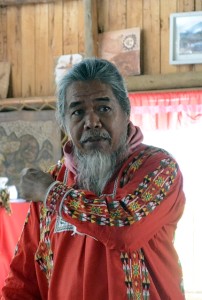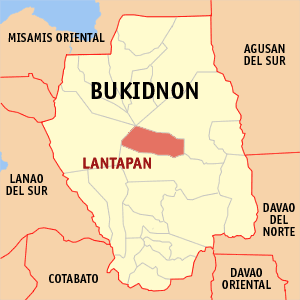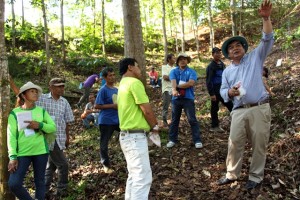By Amy Cruz, originally published at ICRAF’s Agroforestry World Blog

Research and development aim to benefit local communities but how should researchers and indigenous people work together in projects? Four researchers from the World Agroforestry Centre (ICRAF) met with members of the Tala-andig tribe in Indonesia to discuss solutions. Amy Cruz watched and learned.
The Smart Tree-Invest project under the CGIAR Research Program on Forests, Trees and Agroforestry has been generally well-received in Indonesia, Vietnam and the Philippines. Yet, team members in the Philippines wanted to know what local communities think of the project. They met representatives from the Tala-andig tribe in Songco, Lantapan in Bukidnon Province in the southern Philippines.
ICRAF’s work in Lantapan is part of the Climate-smart, Tree-based, Co-investment in Adaptation and Mitigation in Asia (Smart Tree-Invest) project, which aims to help communities create local solutions to cope with climate-change risks.
ICRAF had identified the Tala-andig as important custodians of a critical watershed that was increasingly threatened by the impact of climate change. Smart Tree-Invest is funded by the International Fund for Agricultural Development. IFAD stresses the importance of participation of marginalized groups, including women, youth and indigenous peoples; and the empowerment of smallholding farmers.
For the Tala-andig, the possibility of a ‘co-investment scheme’—in which all people interested in a watershed work together to ensure its benefits are sustainable—would not only mean an additional source of financial support but is also seen as way of strengthening their culture and introducing it to others.

According to Victorino Saway, known to the Tala-andig as Datu Migketay, ‘The project could be seen as co-investment in the culture of our tribe because it is part of our culture to preserve the environment’.
If a co-investment scheme can preserve the tribe’s culture then the people can in turn contribute to improving environmental conservation.
Yet, the elders remained cautious. Datu Migketay talked about the importance of first building trust between the project team and the tribe. He emphasized how respecting their culture was important for the sustainability of any project.
Different understanding of development
There was often a disjunction, he explained, between some developers and his people because, for example, the tribe’s definition of development differed from the definition used by some of the organizations implementing projects in their area.
He gave the example of cementing roads in their village, which could be considered as a welcome development providing faster access all year round but these same roads also contributed to the fragmentation of their tribe by allowing individuals and families to disperse far from the central group.
Datu Migketay says of such development: “To be honest, I am tired. Tired of projects that only benefit those implementing them: projects that do not have any positive impacts for our people.”

This was not meant to altogether discourage development projects or to say that research in development would not achieve anything. However, if institutions involved in development and research in development, such as ICRAF, wanted to truly improve people’s lives then an open, respectful approach was needed.
Researchers, in particular, should be ready to challenge standardized ways of thinking—even their own—and change inappropriate practices. Putting this to the test, researchers took the first step in growing mutual respect with the Tala-andig by obeying the directive to undergo the ritual.
Building trust
As a result, the elders allowed researchers to return and conduct a participatory cultural impact assessment with the whole tribe to ensure that everyone, including women and young people, can identify their roles in the project. All members of the tribe shall also further discuss potential benefits and disadvantages of Smart Tree-Invest and decide as a group if they want to continue or not.
And so whether the project will continue with the Tala-andig is in the hands of the tribe themselves. Researchers may be hopeful as, during the special ceremony, the tribal leaders had asked for guidance from their highest god, Magbabaya, and spirits. Afterwards these elders noted that it seemed that Smart Tree-Invest could benefit their people.











